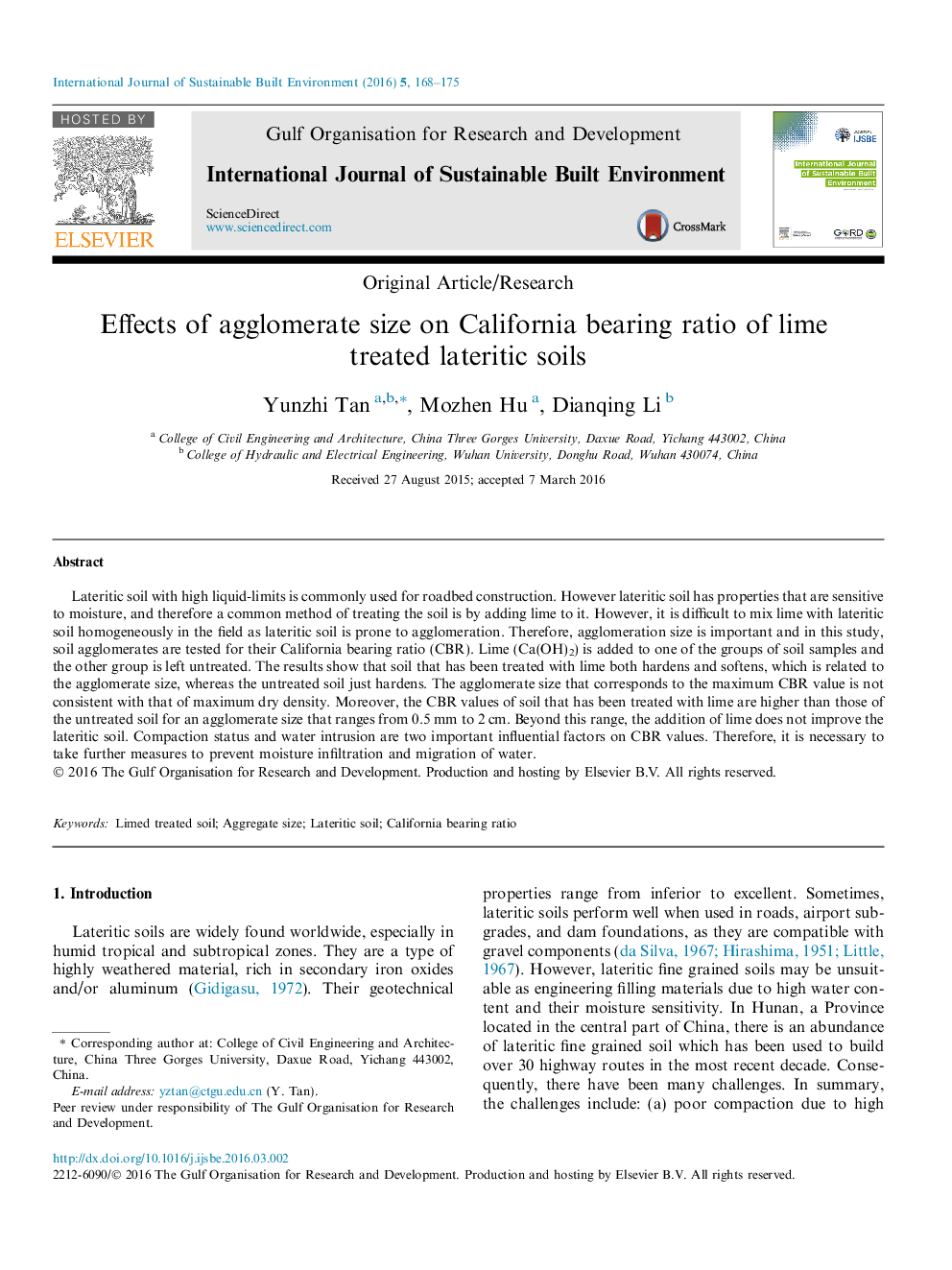| Article ID | Journal | Published Year | Pages | File Type |
|---|---|---|---|---|
| 214751 | International Journal of Sustainable Built Environment | 2016 | 8 Pages |
Lateritic soil with high liquid-limits is commonly used for roadbed construction. However lateritic soil has properties that are sensitive to moisture, and therefore a common method of treating the soil is by adding lime to it. However, it is difficult to mix lime with lateritic soil homogeneously in the field as lateritic soil is prone to agglomeration. Therefore, agglomeration size is important and in this study, soil agglomerates are tested for their California bearing ratio (CBR). Lime (Ca(OH)2) is added to one of the groups of soil samples and the other group is left untreated. The results show that soil that has been treated with lime both hardens and softens, which is related to the agglomerate size, whereas the untreated soil just hardens. The agglomerate size that corresponds to the maximum CBR value is not consistent with that of maximum dry density. Moreover, the CBR values of soil that has been treated with lime are higher than those of the untreated soil for an agglomerate size that ranges from 0.5 mm to 2 cm. Beyond this range, the addition of lime does not improve the lateritic soil. Compaction status and water intrusion are two important influential factors on CBR values. Therefore, it is necessary to take further measures to prevent moisture infiltration and migration of water.
